Thingiverse

My Mars Base 1 by shiver
by Thingiverse
Last crawled date: 2 years, 11 months ago
I designed this Mars base with cost-effectiveness and stylistic comfort in mind. While in space there are no trips to the supermarket, theater etc. so comfort is necessary on a planet that is extremely isolated. A realistic mission would account for a 1.5 year stay so I don't believe that it is a good idea to send people to a desolate planet and put them in cramped units that could psychologically adversely affect the astronauts. The prelaunch of materials is necessary likely for any attempts to colonize Mars by sending oxygen, building material, solar cells, batteries etc. in advance of human landing.
My idea here contains not just buildings but how it can function as a whole. The problem of radiation I have looked at many different ways including digging into ancient Lava or building brick on top of the structures but this would be very costly and time-consuming. It is important to set up Water, Energy and 1 Dome as soon as possible.
The 3 main domes are connected with archways cut out eliminating the need for excessive construction of walkways from building to building.
Enough Water, Oxygen and food would have to be brought to sustain them for this time, living in the landing craft until structures are complete.
The buildings are lined with the waterproof bags ( vacuum sealed for transport ) over the entire interior of every building and filled with liquid or liquid sand combination to limit radiation inside the buildings. Harder Beta Radiation can not be stopped even with Lead, so the plastic in the water Bags will do this job as well, the high concentration of Hydrogen in water will stop the more dangerous Neutron Radiation all simple and low cost.
Bringing excavating equipment and drills is really not logical or cost effective for a first settlement. Most of these vehicles require combustion engines and since there is very little oxygen on Mars these vehicles just wouldn't work. It's an effective way of limiting radiation without the billions in expenses to designing and building special machinery to drill and dig underground bases. The cost of carrying such massive machinery also is just too high for a first mission.
Most of the material used in building construction would be the Martian soil itself. By heating it compacting it and bringing additives to solidify it instead of bringing the building material. This would save billions in cost, power and spacecraft size. I then found that work done by Ames Research Center in Moffett Field in California show that using Sporosarcina pasteurii bacteria ( taken from Astronaut's urine ) can be used in making a type of cement solidifying soil in about 2 weeks to that of concrete.
Also in this process of heating Martian soil to make concrete, water may be be extracted at the same time in the same building using a distilling method. It's been proven that water ice exists on mars from the Spirit Rover's shallow soil dig tests. Existing equipment can separate Hydrogen and Oxygen as needed as well from this one collection method.
The Greenhouse has to be large, you cannot underestimate the need for food and no risks can be taken in production. In the dome there are 2 layers of green housing with electrical and LED lighting for the bottom layer for food production and lighting / natural light for the upper layer for plants for O2 production. Larger research / work dome should have 2 floors for workspace as well.
The main power source can be a larger version of the already tested and robust NASA Nuclear Thermocoupler. If power produced isn't enough I decided to use solar power along with wind power as well because there is an abundance of both on Mars and there is not always sun on Mars depending on the landing site. Landing closer to the poles where frozen liquid is more abundant but sunlight is a problem. If a large Thermocoupler/s could produce enough power it would make landing closer to abundant ice an easier decision then only solar or wind could be a backup power source.
With the wind turbines, I have designed a simple shielding around them that can be controlled by computer or manually to shut and enclose the turbines during heavy windstorms facing the direction of the wind to protect the Turbines.
I also situated them away from the base due to the psychological and physical effects of wind turbines low frequency and infrasound noise that disrupts sleep, causes dizziness, nausea and headaches. All which need to be avoided on a desolate environment.
The buildings themselves are mostly dome shaped as there are regular violent wind storms on Mars that could destroy buildings with flat surfaces as well as Solar Array's on Stilts etc. Ladders are on the Rec building for easy access to clean solar cells when they're dusty. Alternately a mechanism can be made similar to a light bar on a scanner that sweeps the roof back and forth to clean it. A glass dome is another option or pre cut curved solar cells for a domed roof but I'm trying to keep costs down as transporting these would take alot of space.
Small domes can be built around the landing craft after they land to protect them from wind damage and radiation.
I have windows inserted for aesthetics in buildings, but plants would grow in artificial light and small external camera's with internal video monitors can be used to see the exterior in real time if windows are a problem.
Metal buildings would be a very bad idea for radiation shielding as it would scatter some of the more dangerous radiation and make it much worse so I went with Concrete mix and it's possible to make easy repairs.
Martian soil has shown to be very effective in growing plants so Fertilizer would only need to be sent along with plants, seeds, bulbs, pots, lighting etc. or best, grown Hydroponically without the need for soil.
I tried to make it simple, yet aesthetically pleasing and spacious for the emotional and psychological well being of the Astronauts as well as self sustaining for long periods.
All ground piping, cabling and the Large Gas collection cansiters would be covered in Dirt once operational for Sun / wind shielding.
Note the Space Suit man was inserted for size, got it from the NASA models site
My idea here contains not just buildings but how it can function as a whole. The problem of radiation I have looked at many different ways including digging into ancient Lava or building brick on top of the structures but this would be very costly and time-consuming. It is important to set up Water, Energy and 1 Dome as soon as possible.
The 3 main domes are connected with archways cut out eliminating the need for excessive construction of walkways from building to building.
Enough Water, Oxygen and food would have to be brought to sustain them for this time, living in the landing craft until structures are complete.
The buildings are lined with the waterproof bags ( vacuum sealed for transport ) over the entire interior of every building and filled with liquid or liquid sand combination to limit radiation inside the buildings. Harder Beta Radiation can not be stopped even with Lead, so the plastic in the water Bags will do this job as well, the high concentration of Hydrogen in water will stop the more dangerous Neutron Radiation all simple and low cost.
Bringing excavating equipment and drills is really not logical or cost effective for a first settlement. Most of these vehicles require combustion engines and since there is very little oxygen on Mars these vehicles just wouldn't work. It's an effective way of limiting radiation without the billions in expenses to designing and building special machinery to drill and dig underground bases. The cost of carrying such massive machinery also is just too high for a first mission.
Most of the material used in building construction would be the Martian soil itself. By heating it compacting it and bringing additives to solidify it instead of bringing the building material. This would save billions in cost, power and spacecraft size. I then found that work done by Ames Research Center in Moffett Field in California show that using Sporosarcina pasteurii bacteria ( taken from Astronaut's urine ) can be used in making a type of cement solidifying soil in about 2 weeks to that of concrete.
Also in this process of heating Martian soil to make concrete, water may be be extracted at the same time in the same building using a distilling method. It's been proven that water ice exists on mars from the Spirit Rover's shallow soil dig tests. Existing equipment can separate Hydrogen and Oxygen as needed as well from this one collection method.
The Greenhouse has to be large, you cannot underestimate the need for food and no risks can be taken in production. In the dome there are 2 layers of green housing with electrical and LED lighting for the bottom layer for food production and lighting / natural light for the upper layer for plants for O2 production. Larger research / work dome should have 2 floors for workspace as well.
The main power source can be a larger version of the already tested and robust NASA Nuclear Thermocoupler. If power produced isn't enough I decided to use solar power along with wind power as well because there is an abundance of both on Mars and there is not always sun on Mars depending on the landing site. Landing closer to the poles where frozen liquid is more abundant but sunlight is a problem. If a large Thermocoupler/s could produce enough power it would make landing closer to abundant ice an easier decision then only solar or wind could be a backup power source.
With the wind turbines, I have designed a simple shielding around them that can be controlled by computer or manually to shut and enclose the turbines during heavy windstorms facing the direction of the wind to protect the Turbines.
I also situated them away from the base due to the psychological and physical effects of wind turbines low frequency and infrasound noise that disrupts sleep, causes dizziness, nausea and headaches. All which need to be avoided on a desolate environment.
The buildings themselves are mostly dome shaped as there are regular violent wind storms on Mars that could destroy buildings with flat surfaces as well as Solar Array's on Stilts etc. Ladders are on the Rec building for easy access to clean solar cells when they're dusty. Alternately a mechanism can be made similar to a light bar on a scanner that sweeps the roof back and forth to clean it. A glass dome is another option or pre cut curved solar cells for a domed roof but I'm trying to keep costs down as transporting these would take alot of space.
Small domes can be built around the landing craft after they land to protect them from wind damage and radiation.
I have windows inserted for aesthetics in buildings, but plants would grow in artificial light and small external camera's with internal video monitors can be used to see the exterior in real time if windows are a problem.
Metal buildings would be a very bad idea for radiation shielding as it would scatter some of the more dangerous radiation and make it much worse so I went with Concrete mix and it's possible to make easy repairs.
Martian soil has shown to be very effective in growing plants so Fertilizer would only need to be sent along with plants, seeds, bulbs, pots, lighting etc. or best, grown Hydroponically without the need for soil.
I tried to make it simple, yet aesthetically pleasing and spacious for the emotional and psychological well being of the Astronauts as well as self sustaining for long periods.
All ground piping, cabling and the Large Gas collection cansiters would be covered in Dirt once operational for Sun / wind shielding.
Note the Space Suit man was inserted for size, got it from the NASA models site
Similar models
thingiverse
free

My Mars Base 2 by shiver
...vered in dirt once operational for sun / wind shielding.
astronaut model taken from nasa's models site for an idea of scale
thingiverse
free

Subterranean Martian Pyramid by austinkbutler
...id are three levels which serve as housing, storage, and work areas. large cylinders surround the pyramid storing water and fuel.
thingiverse
free

Mars Base: The Valles Marineris by kwilliams
...h the red planet, mars, in mind.
link to my hydroponics system on maker bot thingiversehttp://www.thingiverse.com/thing:359538
thingiverse
free

First Mars Colony by aprzy15
...aut food.
got your traditional lounge. nice couch to rest on after a long day at work.
basic kitchen with living necessities.
thingiverse
free
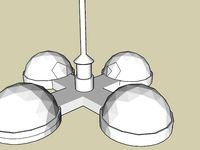
Ares permanent settlement by zivziv
...n rover.
in the event of a solar flare the crew will take shelter in an underground bunker until it is safe to leave the shelter.
3dwarehouse
free

UGE - Wind Turbine - Eddy 600W
...des street lighting via wind and solar power. #600w #eddy #green #light #pv_panel #solar #street #sustainable #turbine #uge #wind
3dwarehouse
free

Mars Direct Habitation Module
..., and so on. after a while, a martian base will have accumulated. #mars #mars_direct #mars_direct_hab #mars_lander #robert_zubrin
3dwarehouse
free

Mars Direct Earth Return Vehicle
...o the life support systems on the hab. #earth_return_vehicle #erv #mars #mars_direct #mars_direct_erv #mars_lander #robert_zubrin
3dwarehouse
free

Mars Wind turbine
...mars wind turbine
3dwarehouse
helium powered roto wind turbine/ balloon #helium_wind_turbine #mars #wind_turbine
thingiverse
free

MakerBot Mars Base (MMB) by dmatsuda1029
...erate much more power.
assembly of the printed design is necessary for making the model printable by a makerbot replicatorâ¢.
Shiver
3d_export
free

duskfang from tes iv
...duskfang from tes iv 3dexport sword dawnfang/duskfang from dlc "shiverng ...
3d_export
$20

Enderman minecraft Baby
...also make a long, loud, threatening sound and run shiverng at the player to attack them. if an enderman...
thingiverse
free

Shivers by WoomyUnitedToday
...shivers by woomyunitedtoday
thingiverse
luigi's mansion
sketchfab
$15

Shiver me timbers!
...ttps://www.artstation.com/marketplace/p/mjyyv/perfect-wooden-planks - shiver me timbers! - buy royalty free 3d model by misslumos
thingiverse
free

Jeep Single Letters by shiver
...jeep single letters by shiver
thingiverse
requested separate letters from my jeep logo
thingiverse
free
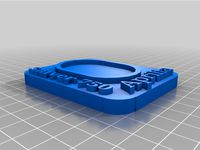
Stand Support Aprilia Shiver 750
...0
thingiverse
infill 100%.
the stand support needs reinforcement with epoxy glue on the underside because the weak pla material.
thingiverse
free

The Uncloaked TARDIS by shiver
...;m not sure who made the actual uncloaked design but i thought it would be cool to have a model of the actual look of the tardis.
thingiverse
free

Aprilia Shiver 750 indicator light adapter LED by hoto6520
...prilia shiver 750 indicator light adapter led by hoto6520
thingiverse
adapter from the original turn signals to led turn signals
thingiverse
free

Albert the Shivering Giraffe by susel
...ng his own clothes. but good yarn is hard to get in the savannah, and learning to knit with your hooves requires much practice...
renderosity
$5

3D Scenery: Shivering Frostscape
... other material settings) everything else works as they should, including the morphs. more info included in the readme.</p>
Mars
3d_ocean
$10

Mars
...tar stars system universal way world
this is the mars with atmosphere. the textures file including 4 maps. thank you for looking.
turbosquid
$2

MARS
...
turbosquid
royalty free 3d model mars for download as blend on turbosquid: 3d models for games, architecture, videos. (1170651)
3ddd
free

ClassiCon Mars
...classicon mars
3ddd
classicon , mars
стул mars от classicon.
3ds max 2011 + fbx. vray.
turbosquid
$1

the mars
...oyalty free 3d model the mars for download as blend and blend on turbosquid: 3d models for games, architecture, videos. (1704346)
turbosquid
free

mars
...squid
royalty free 3d model mars for download as max and obj on turbosquid: 3d models for games, architecture, videos. (1355198)
3d_export
free

mars landscape
...mars landscape
3dexport
mars landscape made with word machine.
turbosquid
$40

Mars
... available on turbo squid, the world's leading provider of digital 3d models for visualization, films, television, and games.
turbosquid
$39

Mars
... available on turbo squid, the world's leading provider of digital 3d models for visualization, films, television, and games.
turbosquid
$25

Mars
... available on turbo squid, the world's leading provider of digital 3d models for visualization, films, television, and games.
turbosquid
$20

Mars
... available on turbo squid, the world's leading provider of digital 3d models for visualization, films, television, and games.
Base
archibase_planet
free
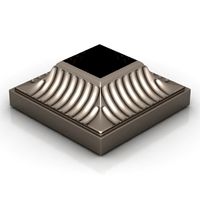
Base
...base
archibase planet
base column column base
base 1 - 3d model (*.gsm+*.3ds) for interior 3d visualization.
archibase_planet
free

Base
...base
archibase planet
base column base column
base 5 - 3d model (*.gsm+*.3ds) for interior 3d visualization.
archibase_planet
free
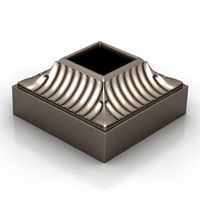
Base
...base
archibase planet
base column column base
base 7 - 3d model (*.gsm+*.3ds) for interior 3d visualization.
archibase_planet
free
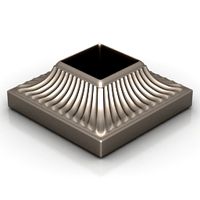
Base
...base
archibase planet
base column column base
base 2 - 3d model (*.gsm+*.3ds) for interior 3d visualization.
archibase_planet
free
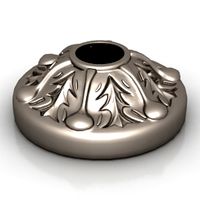
Base
...base
archibase planet
base column column base
base 3 - 3d model (*.gsm+*.3ds) for interior 3d visualization.
archibase_planet
free
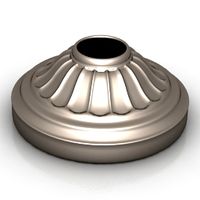
Base
...base
archibase planet
base column column base
base 4 - 3d model (*.gsm+*.3ds) for interior 3d visualization.
archibase_planet
free

Base
...base
archibase planet
base column base column
base 6 - 3d model (*.gsm+*.3ds) for interior 3d visualization.
archibase_planet
free
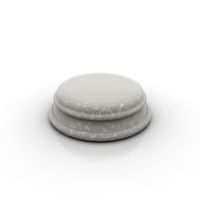
Base
...base
archibase planet
foundation base
column base ionic - 3d model (*.gsm+*.3ds) for interior 3d visualization.
archibase_planet
free
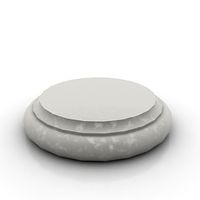
Base
...base
archibase planet
foundation base
column base tuscan - 3d model (*.gsm+*.3ds) for interior 3d visualization.
design_connected
$18
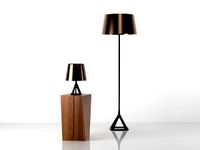
Base
...base
designconnected
tom dixon base computer generated 3d model. designed by dixon, tom.
1
turbosquid
$15
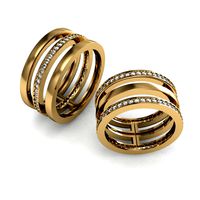
ring 1+1
... available on turbo squid, the world's leading provider of digital 3d models for visualization, films, television, and games.
turbosquid
$10
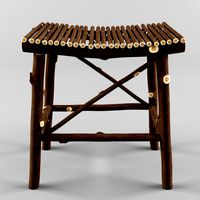
chair(1)(1)
... available on turbo squid, the world's leading provider of digital 3d models for visualization, films, television, and games.
turbosquid
$8

Chair(1)(1)
... available on turbo squid, the world's leading provider of digital 3d models for visualization, films, television, and games.
turbosquid
$2
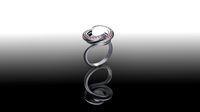
RING 1(1)
... available on turbo squid, the world's leading provider of digital 3d models for visualization, films, television, and games.
turbosquid
$1

Table 1(1)
... available on turbo squid, the world's leading provider of digital 3d models for visualization, films, television, and games.
turbosquid
$1

house 1(1)
... available on turbo squid, the world's leading provider of digital 3d models for visualization, films, television, and games.
turbosquid
$59
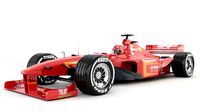
Formula 1(1)
...lty free 3d model formula 1 for download as max, fbx, and obj on turbosquid: 3d models for games, architecture, videos. (1567088)
design_connected
$11

No 1
...no 1
designconnected
sibast no 1 computer generated 3d model. designed by sibast, helge.
turbosquid
$2
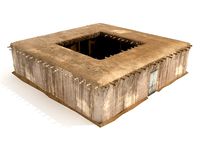
desert house(1)(1)
...3d model desert house(1)(1) for download as 3ds, max, and obj on turbosquid: 3d models for games, architecture, videos. (1055095)
turbosquid
$50
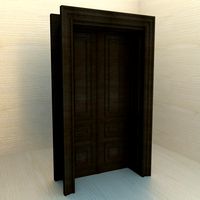
door 1 darkwood 1
... available on turbo squid, the world's leading provider of digital 3d models for visualization, films, television, and games.
